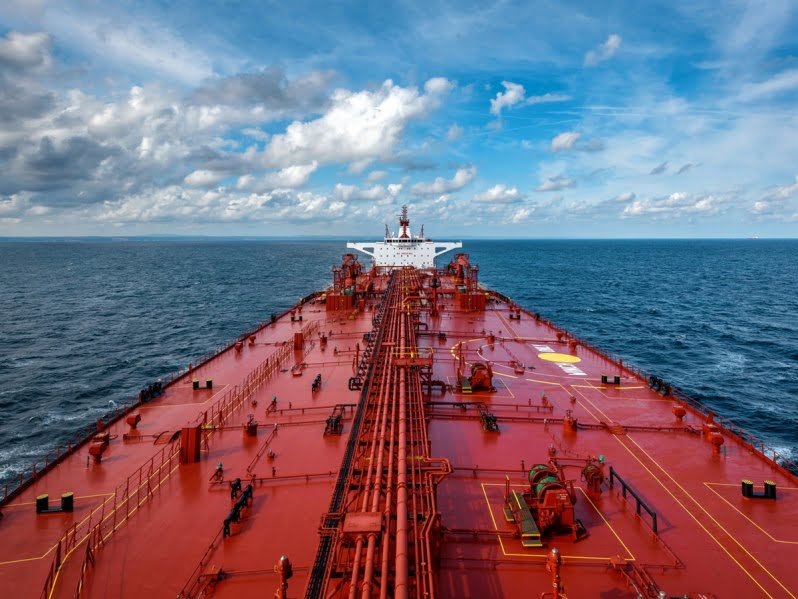
If prolonged in the medium term the conflict in Ukraine will decrease the net import of diesel in Europe
However, this will be compensated by an increase in long-distance imports.
Analyzing how the war in Ukraine would affect the oil, refining and tanker market, in a Base Case with the conflict ending in 2025, he projected that, at the end of this period, world demand for oil would be 8 mb/d above 2021, with an average growth of 1.4 mb/d per year. By comparison, in an Alternative Scenario, where the Ukrainian conflict is supposed to persist in the medium term, world demand for oil is expected to increase by only 7 mb/d, equivalent to an average growth of 1.2 mb/d.
As the conflict spreads in the medium term, Russia would receive a greater blow of demand compared to the Base Case, since the prolongation of the conflict causes the Russian demand to be reduced by 0,5 mb/d at the end of the period without affecting mainly the demand of tankers except for those who carry out cabotage. European demand is also revised downwards compared to the Base Case, due to the impact of persistent high prices and the fact that Europe will be forced to replace Russian diesel with more expensive supplies from the US, the Middle East and Europe.
Essentially, the longer the conflict in Ukraine lasts, the greater the impact on Russian oil supply and exports. Consequently, if the conflict persists in the medium term, by the end of the forecast period Russian crude oil production is expected to be 3.1 mb/d (28%) lower than at the end of 2021.
It is worrying for the oil and tanker markets that, although the price of oil is higher at the end of the forecast compared to the Base Case, Russia’s smaller supply is not expected to be replaced by a sufficient supply of oil from elsewhere in the world.
In essence, it will be the United States and the main OPEC members of the Middle East who will have to cover this growing supply deficit. Due to the long lead times for the exploration and production projects, BRS Tanker does not see them coming into operation compared to the base case, although it does note that these projects would undoubtedly receive the green light to become operational in the longer term.
In the alternative case, the US crude supply. It is also considered 400 kb/d higher at the end of the forecast, but in total the world oil supply will be lower by 1.3 mb/d than that of the base case and an increase in crude flows to Europe is projected from the Middle East and the US. compared to the Base Case.
BRS Tanker assumes that the continued ostracism of Russia by the OECD, over the forecast period, will cause European imports of Russian crude by sea to drop to zero starting next year. All Russian flows by sea will be diverted to non-OECD countries- Russian crude and refined products are supposed to be sold at a steep discount-most of them in Asia, but also, more narrowly, to Africa and Latin America. Despite this, around 1 mb/d of Russian crude oil supply would be at risk due to the lack of international buyers or because its refineries would lack demands from abroad.
This will imply support for the longer tonne-miles trips to Asia and elsewhere outside the OECD, as Europe will continue not to import Russian crude by the end of 2027.
Final projections
If the conflict in Ukraine continues in the medium term, the need for net imports of diesel into Europe is lower than in the Base Case, which will mean a lower demand for clean shipping to the region. However, this will be offset by increased imports of long-distance diesel to the Atlantic basin, especially from the Middle East and Asia.
It is not yet possible to determine whether MRSs will receive a boost in demand for mile-tonnes, as Russia sends more refined products to non-OECD countries. Assuming a ban on securing and reinsurance is introduced for European and UK tankers transporting Russian oil and Russian exports of clean products plummet, global demand for MR will be reduced.
In short, and taking into account possible higher bunker prices, BRS Tanker has reduced its MR2 profit estimates by 5% towards the end of the forecast in the Alternative Scenario with medium-term conflict closure.
Meanwhile, LR’s profit forecasts have increased by between 2% and 3%, as increased demand offsets higher fuel costs.
SOURCE: MUNDOMARITIMO.CL
